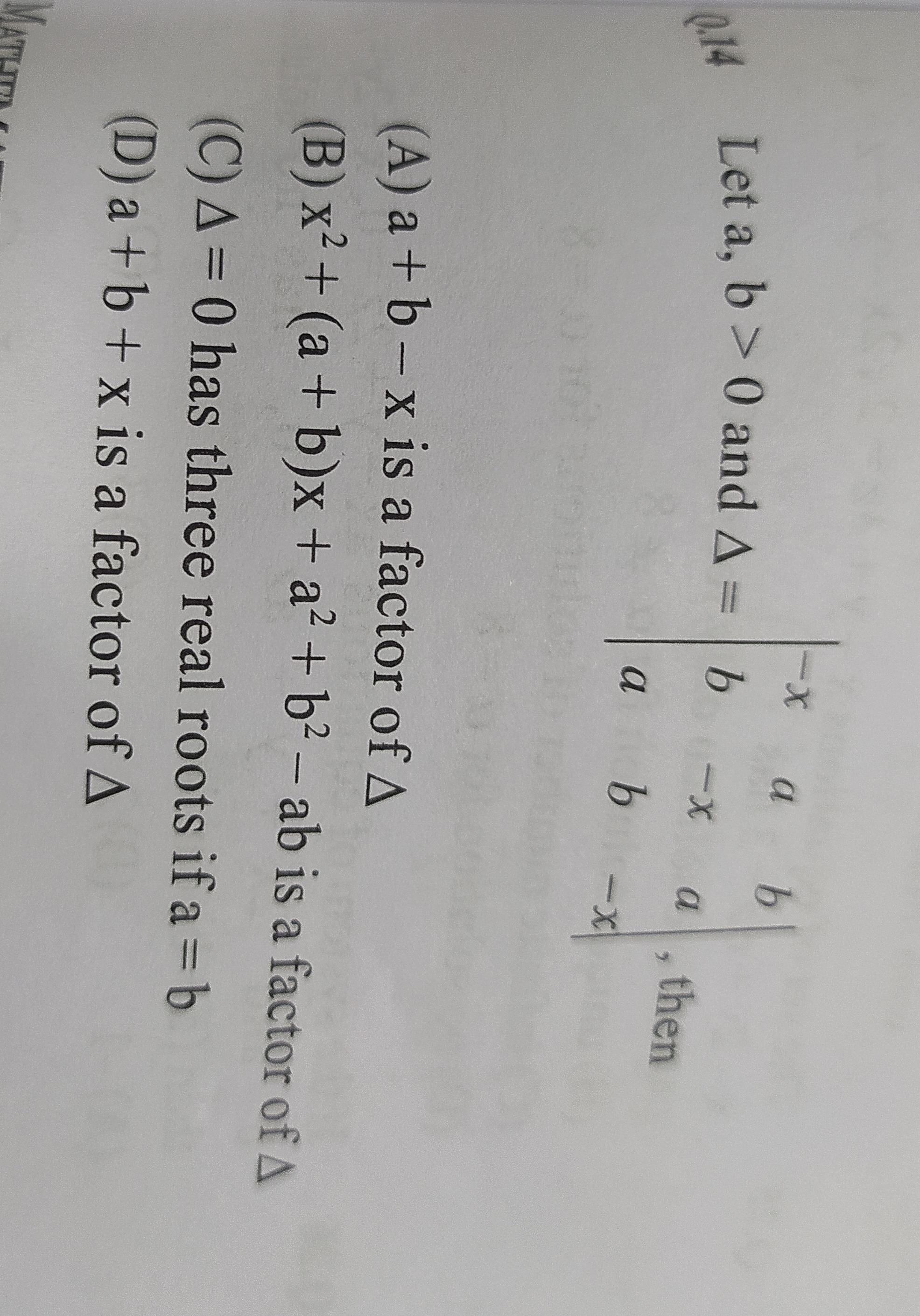Question
Question: Let a, b > 0 and $\Delta = \begin{vmatrix} -x & b & a \\ b & -x & b \\ a & b & -x \end{vmatrix}$, th...
Let a, b > 0 and Δ=−xbab−xbab−x, then

A
a + b - x is a factor of Δ
B
x2+(a+b)x+a2+b2−ab is a factor of Δ
C
Δ=0 has three real roots if a = b
D
a + b + x is a factor of Δ
Answer
Option (C)
Explanation
Solution
We are given
Δ=−xbab−xbab−x.Expanding along the first row:
Δ=−x−xbb−x−bbab−x+aba−xb=−x[(−x)(−x)−b⋅b]−b[b(−x)−b⋅a]+a[b⋅b−(−x)a]=−x[x2−b2]−b[−bx−ab]+a[b2+ax]=−x3+xb2+b2x+ab2+ab2+a2x=−x3+(a2+2b2)x+2ab2.Thus,
Δ=−x3+(a2+2b2)x+2ab2.None of the candidate linear factors in (A) or (D) will cancel this cubic for all a,b>0 (one can verify by substituting x=a+b in (A) or x=−a−b in (D)). Testing (B) via polynomial division shows the quadratic in (B) does not divide Δ in general.
Now, consider option (C):
When a=b (let a=b=c>0), the determinant becomes
A standard result for a 3×3 matrix with diagonal entries p and off‐diagonals q is:
det=(p−q)2(p+2q).Here, p=−x and q=c; so
Δ=[(−x)−c]2[(−x)+2c]=(x+c)2(2c−x).Setting Δ=0 gives the roots:
x=−c(double root)andx=2c.These are all real. Hence, option (C) is correct.
